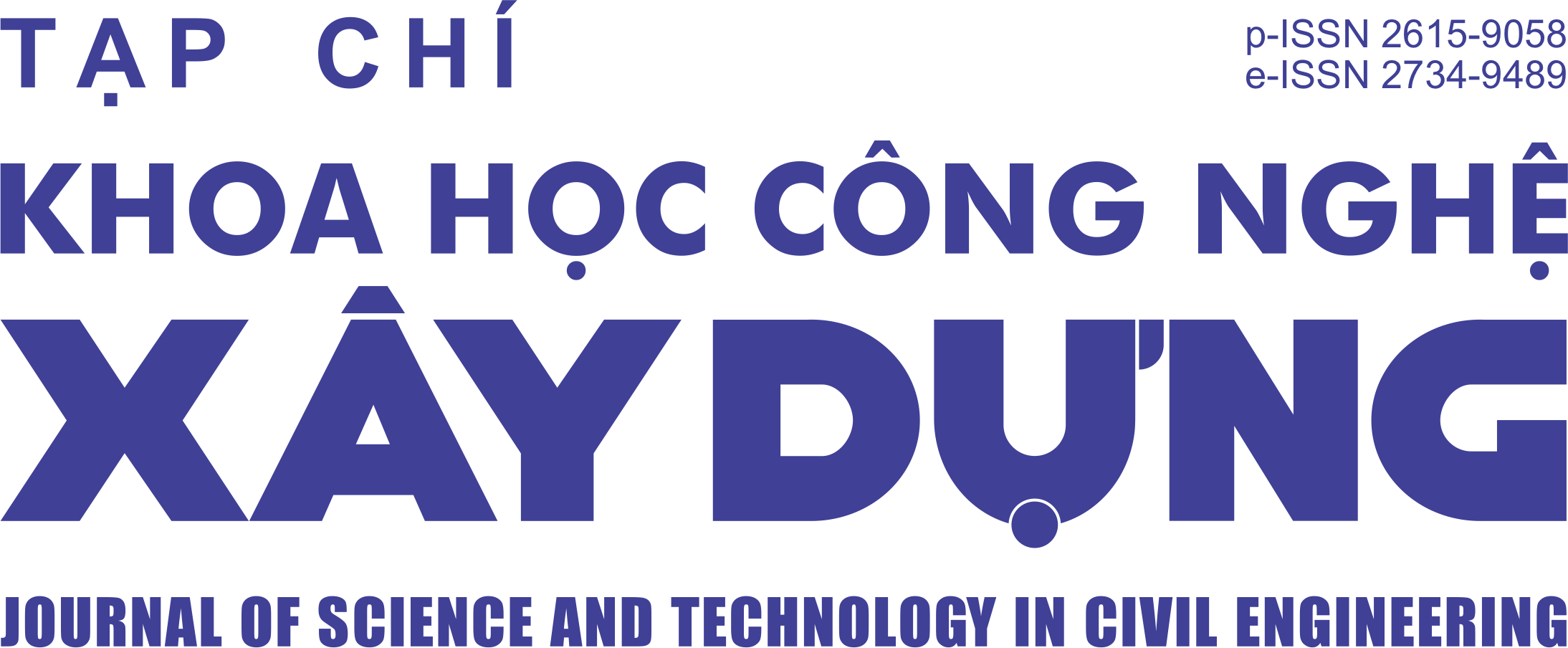A data-driven approach for investigating shear strength of slender steel fiber reinforcedconcrete beams
Abstract
Using a data-driven approach to study and predict the shear strength of slender steel fiber reinforced concrete
beams has great applicability for the design and construction process. Based on the data-driven approach, an
Artificial Neural Network (ANN) model with some hyperparameters optimized by Particle Swarm Optimization (PSO) algorithm is successfully built. The hidden two-layer ANN model with the number of neurons (5; 6) predicted shear strength with higher accuracy than the models proposed previously in the literature, with
R2 = 0.9727 and RMSE = 31.9822 kN for the control dataset. By interpreting the results of the ANN model by the values of SHAP, including the Global SHAP value and SHAP independence plot, the order of influence of the variables on the shear strength value and the predictability of the ANN model can be arranged according to effective depth of section > beam width > longitudinal reinforcement ratio > steel fiber content > concrete
compressive strength > shear span/effective depth ratio > fiber tensile strength > aggregate size. Fiber tensile
strength and aggregate size almost do not affect the shear strength value. An increase in the shear span-to-effective depth ratio reduces shear strength, which can be increased by increasing the value of effective depth of section, beam width, longitudinal reinforcement ratio, steel fiber content, and concrete compressive strength.
The results of this paper are meaningful in the initial assessment of the shear strength of SSFRC, which helps to speed up the design process and reduce the cost of designing and testing SSFRC beams.
Downloads
Copyright (c) 2023 Hanoi University of Civil Engineering

This work is licensed under a Creative Commons Attribution-NonCommercial-NoDerivatives 4.0 International License.
1. The Author assigns all copyright in and to the article (the Work) to the Journal of Science and Technology in Civil Engineering (JSTCE) – Hanoi University of Civil Engineering (HUCE), including the right to publish, republish, transmit, sell and distribute the Work in whole or in part in electronic and print editions of the Journal, in all media of expression now known or later developed.
2. By this assignment of copyright to the JSTCE, reproduction, posting, transmission, distribution or other use of the Work in whole or in part in any medium by the Author requires a full citation to the Journal, suitable in form and content as follows: title of article, authors’ names, journal title, volume, issue, year, copyright owner as specified in the Journal, DOI number. Links to the final article published on the website of the Journal are encouraged.
3. The Author and the company/employer agree that any and all copies of the final published version of the Work or any part thereof distributed or posted by them in print or electronic format as permitted herein will include the notice of copyright as stipulated in the Journal and a full citation to the Journal as published on the website.







